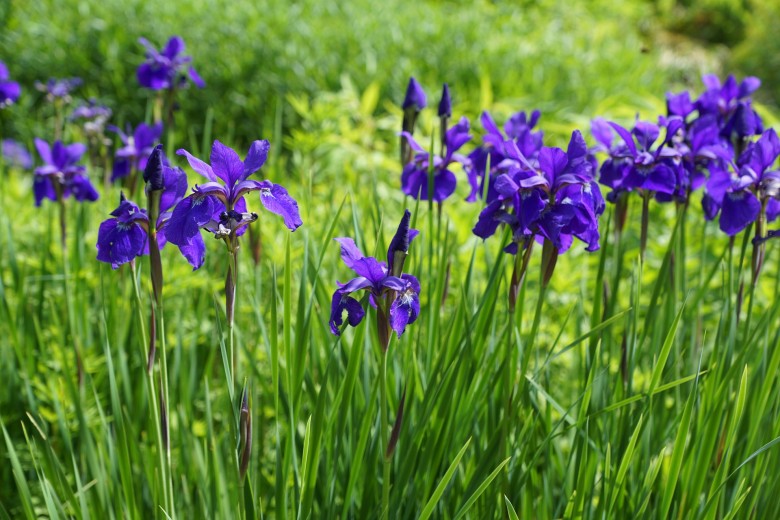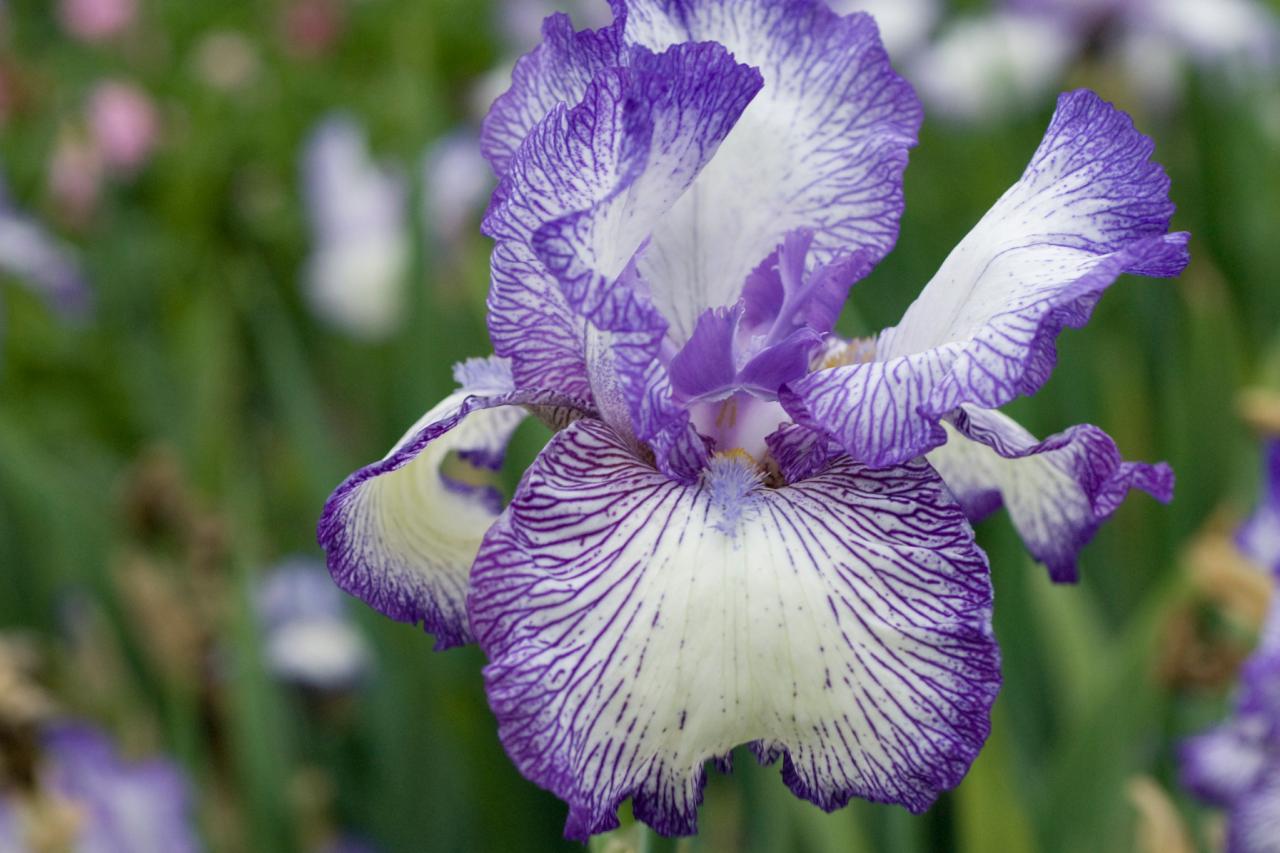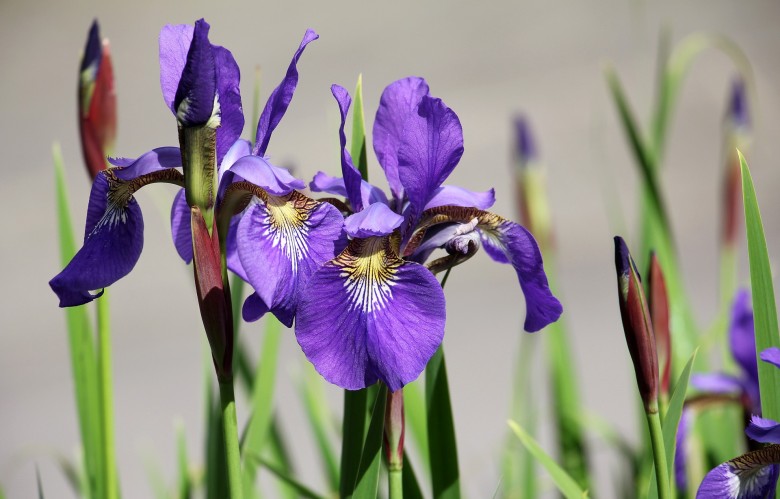Why Propagate Irises?
Propagating irises can be a rewarding and cost-effective way to increase your collection of these beautiful flowers. By learning how to propagate an iris, you can enjoy an abundance of blooms without breaking the bank. Additionally, propagation allows you to share your favorite irises with friends and family, or to preserve rare varieties that might otherwise be lost. Whether you’re a seasoned gardener or just starting out, propagating irises can be a fun and creative way to expand your garden.
Understanding Iris Types: Choosing the Right Method
When it comes to propagating irises, understanding the different types of irises is crucial in determining the best propagation method. There are several types of irises, each with its unique characteristics and requirements. Bearded irises, for example, are one of the most popular types and can be propagated through rhizome division. Japanese irises, on the other hand, are more delicate and require a different approach. Louisiana irises, known for their vibrant colors, can be propagated through seed or division. By understanding the specific needs of each type of iris, gardeners can increase their chances of success when learning how to propagate an iris. This knowledge will also help in selecting the right method for the specific iris variety, whether it’s division, seed propagation, or other techniques.
How to Divide and Conquer: Step-by-Step Instructions
Dividing and replanting iris rhizomes is a simple and effective way to propagate these beautiful flowers. To get started, it’s essential to know when to divide. The best time to divide irises is in the summer, after the blooming season, when the plant is dormant. This allows the newly divided rhizomes to establish themselves before the next growing season. Before dividing, prepare the soil by loosening it to a depth of about 12 inches and adding organic matter such as compost or well-rotted manure. To divide the rhizome, carefully dig up the entire clump, taking care not to damage the roots. Gently wash away any dirt, and then separate the rhizome into individual sections, making sure each section has at least one “eye” or growing point. Replant the divided rhizomes immediately, spacing them about 12-18 inches apart, and water well. By following these steps and learning how to propagate an iris through division, gardeners can enjoy an abundance of these stunning flowers in their garden.
The Art of Iris Seed Propagation
Propagating irises from seed is a rewarding and challenging process that requires patience and attention to detail. To start, collect seeds from mature iris flowers, making sure to harvest them when they are dry and ripe. Prepare the seeds by soaking them in water for 24 hours, then sow them in a seed starting mix, about 1/8 inch deep. Keep the soil consistently moist and warm, around 70-80°F, until germination, which can take 1-3 months. Once seedlings emerge, provide them with bright, indirect light and maintain a temperature of around 60-70°F. Transplant the seedlings into individual pots once they have two sets of leaves, and continue to care for them until they are mature enough to be planted in the garden. When learning how to propagate an iris from seed, it’s essential to be aware that the resulting plants may not retain the exact characteristics of the parent plant, but will still produce beautiful, unique blooms.
Tips and Tricks for Successful Iris Propagation
When it comes to propagating irises, there are several common challenges that can arise. To overcome these obstacles and ensure successful propagation, it’s essential to be aware of potential pitfalls and take steps to mitigate them. One of the most common issues is pests, such as iris borer and aphids, which can damage the plants and hinder propagation. To combat these pests, use organic pest control methods, such as introducing beneficial insects or spraying with neem oil. Another challenge is disease, particularly fungal infections, which can be prevented by providing good air circulation and watering carefully. Environmental factors, such as extreme temperatures and weather conditions, can also impact propagation success. To minimize the risk of these factors, choose a propagation location with protection from harsh weather and maintain a consistent temperature. By understanding how to propagate an iris and being aware of these potential challenges, gardeners can take steps to overcome them and enjoy a bountiful harvest of beautiful irises. Additionally, using fresh and healthy plant material, providing adequate light and water, and monitoring for signs of stress or disease can also contribute to successful iris propagation.
When to Propagate: Timing is Everything
Timing is a critical factor in successful iris propagation. Understanding when to divide, plant, and care for irises can make all the difference in the success of the propagation process. For bearded irises, the best time to divide and replant is in late summer to early fall, about 4-6 weeks after blooming. This allows the newly divided rhizomes to establish themselves before the winter months. Japanese and Louisiana irises, on the other hand, are best divided in the spring, when new growth is emerging. When learning how to propagate an iris, it’s essential to consider the specific needs of the variety being propagated. In terms of planting, spring and fall are generally the best times, as the weather is mild and there is ample moisture. Avoid planting in the heat of summer or during extreme weather conditions, as this can cause stress to the plants. Additionally, timing is also important when it comes to caring for newly propagated irises. Watering, fertilizing, and pruning should be done at the right time to promote healthy growth and blooming. By understanding the importance of timing in iris propagation, gardeners can increase their chances of success and enjoy a beautiful display of iris blooms.
Caring for Newly Propagated Irises
Once newly propagated irises are planted, proper care is essential to ensure they establish themselves and thrive. Watering is a critical aspect of care, as irises need consistent moisture, especially during the first growing season. However, it’s essential to avoid over-watering, which can lead to rot and other problems. A general rule of thumb is to provide about 1 inch of water per week, either through rainfall or irrigation. Fertilizing is also important, as it provides the necessary nutrients for healthy growth and blooming. A balanced, slow-release fertilizer applied in the spring and summer months can help promote strong growth and vibrant blooms. Pruning is another important aspect of care, as it helps to maintain the health and appearance of the plants. Remove any dead or damaged foliage and flowers, and trim back the foliage to about 6 inches from the ground after blooming. This will help the plant conserve energy and promote new growth. By following these care tips and understanding how to propagate an iris, gardeners can enjoy a beautiful and thriving iris bed. Additionally, mulching around the plants can help retain moisture, suppress weeds, and regulate soil temperature, further promoting healthy growth and development.
Common Mistakes to Avoid in Iris Propagation
When learning how to propagate an iris, it’s essential to be aware of common mistakes that can hinder the success of the propagation process. One of the most critical mistakes to avoid is over-watering, which can lead to rot and other problems. On the other hand, under-watering can cause stress to the plants, making them more susceptible to disease and pests. Improper soil preparation is another common mistake, as irises require well-draining soil with a pH between 6.0 and 7.0. Failure to provide the right soil conditions can lead to poor growth and blooming. Additionally, dividing irises at the wrong time or not providing enough space between plants can also lead to poor results. It’s also important to avoid using old or diseased rhizomes for propagation, as this can spread disease and pests to other plants. By being aware of these common mistakes and taking steps to avoid them, gardeners can increase their chances of success when propagating irises. Furthermore, understanding how to propagate an iris and following best practices can help to minimize the risk of mistakes and ensure a thriving iris bed.




:max_bytes(150000):strip_icc()/how-to-propogation-10-c241017e7e9c440a9aef2f58c66a3e4b.jpg)

